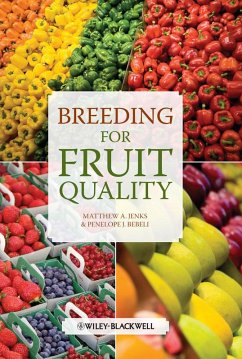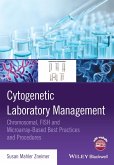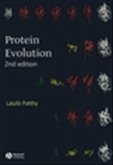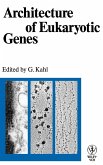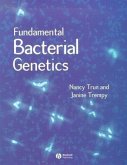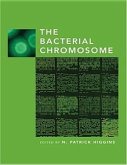Breeding for Fruit Quality
Herausgeber: Jenks, Matthew A; Bebeli, Penelope
Breeding for Fruit Quality
Herausgeber: Jenks, Matthew A; Bebeli, Penelope
- Gebundenes Buch
- Merkliste
- Auf die Merkliste
- Bewerten Bewerten
- Teilen
- Produkt teilen
- Produkterinnerung
- Produkterinnerung
The global demand for high quality fruits that are rich in nutrients and that can endure the demands of worldwide supply chains is growing rapidly. Fruits are an important component of the human diet, providing vitamins, minerals, antioxidants, and fiber. All of these qualities contribute to the nutritional needs and health maintenance of humans. Breeding for Fruit Quality reviews the application of modern plant breeding methods to the development of improved varieties of fruits. Breeding for Fruit Quality opens with chapters that look at fruit biology and breeding strategies behind specific…mehr
Andere Kunden interessierten sich auch für
![Atlas of Mammalian Chromosomes Atlas of Mammalian Chromosomes]() Atlas of Mammalian Chromosomes629,99 €
Atlas of Mammalian Chromosomes629,99 €![Cytogenetic Laboratory Management Cytogenetic Laboratory Management]() Susan Mahler ZneimerCytogenetic Laboratory Management147,99 €
Susan Mahler ZneimerCytogenetic Laboratory Management147,99 €![Protein Evolution Protein Evolution]() Laszlo PatthyProtein Evolution163,99 €
Laszlo PatthyProtein Evolution163,99 €![Architecture of Eukaryotic Genes Architecture of Eukaryotic Genes]() Architecture of Eukaryotic Genes403,99 €
Architecture of Eukaryotic Genes403,99 €![Fundamental Bacterial Genetics Fundamental Bacterial Genetics]() Nancy TrunFundamental Bacterial Genetics115,99 €
Nancy TrunFundamental Bacterial Genetics115,99 €![The Bacterial Chromosome The Bacterial Chromosome]() The Bacterial Chromosome126,99 €
The Bacterial Chromosome126,99 €![Epigenetics and Health Epigenetics and Health]() Michelle McculleyEpigenetics and Health100,99 €
Michelle McculleyEpigenetics and Health100,99 €-
-
-
The global demand for high quality fruits that are rich in nutrients and that can endure the demands of worldwide supply chains is growing rapidly. Fruits are an important component of the human diet, providing vitamins, minerals, antioxidants, and fiber. All of these qualities contribute to the nutritional needs and health maintenance of humans. Breeding for Fruit Quality reviews the application of modern plant breeding methods to the development of improved varieties of fruits. Breeding for Fruit Quality opens with chapters that look at fruit biology and breeding strategies behind specific traits, including a look at traits such as organoleptic quality, nutritional value, and improved yield, among others. Subsequent chapters review breeding efforts to improve overall quality in a wide range of specific fruits. Providing broad ranging coverage of cutting edge methods now being applied to the development of fruit crops, Breeding for Fruit Quality will be a valuable resource for fruit biologists, breeders, geneticists, and industry personnel. Key Features: * Broad coverage of modern breeding technologies being implemented to improve overall fruit quality * Trait specific chapters explore efforts to promote traits of industrial and nutritional importance * Chapters in fruits, ranging from apple and grapes to tomatoes and olives, provide detailed coverage of breeding practices for economically important fruit crops
Hinweis: Dieser Artikel kann nur an eine deutsche Lieferadresse ausgeliefert werden.
Hinweis: Dieser Artikel kann nur an eine deutsche Lieferadresse ausgeliefert werden.
Produktdetails
- Produktdetails
- Verlag: Wiley
- Seitenzahl: 400
- Erscheinungstermin: 26. April 2011
- Englisch
- Abmessung: 244mm x 175mm x 23mm
- Gewicht: 930g
- ISBN-13: 9780813810720
- ISBN-10: 0813810728
- Artikelnr.: 35339795
- Herstellerkennzeichnung
- Libri GmbH
- Europaallee 1
- 36244 Bad Hersfeld
- gpsr@libri.de
- Verlag: Wiley
- Seitenzahl: 400
- Erscheinungstermin: 26. April 2011
- Englisch
- Abmessung: 244mm x 175mm x 23mm
- Gewicht: 930g
- ISBN-13: 9780813810720
- ISBN-10: 0813810728
- Artikelnr.: 35339795
- Herstellerkennzeichnung
- Libri GmbH
- Europaallee 1
- 36244 Bad Hersfeld
- gpsr@libri.de
Editors: Matthew A. Jenks is Professor of Horticulture and Landscape Architecture at the Center for Plant Environmental Stress Physiology at Purdue University. Penelope J. Bebeli is Professor in the Laboratory of Plant Breeding and Biometry in the Department of Crop Science at the Agricultural University of Athens.
Contributors xi
Preface xv
Section I Introduction 3
Chapter 1 The Biological Basis of Fruit Quality 5
Harold C. Passam, Ioannis C. Karapanos, and Alexios A. Alexopoulos
Introduction 5
Fruit Quality 5
Fruit Constituents and Their Contribution to the Human Diet 6
Fruit Metabolism during Fruit Development, Maturation, and Ripening 12
Cell Wall Metabolism and Fruit Texture 19
The Metabolism of Volatiles that Contribute to Fruit Aroma 22
Pigment Metabolism and Fruit Color Changes 24
Respiration in Relation to Fruit Metabolism and Ripening 26
The Role of Ethylene in Fruit Ripening and Quality 27
Conclusion and Future Perspectives 29
References 30
Section II Strategies for Improving Specific Fruit Quality Traits 39
Chapter 2 Fruit Organoleptic Properties and Potential for Their Genetic
Improvement 41
Detlef Ulrich and Klaus Olbricht
Introduction 41
Fruit Organoleptic Properties 42
Organoleptic Properties during Domestication and Breeding 46
Flavor Diversity 48
Breeding for Flavor 50
References 56
Chapter 3 Breeding for Fruit Nutritional and Nutraceutical Quality 61
Jacopo Diamanti, Maurizio Battino, and Bruno Mezzetti
Introduction 61
The Effect of Environment and Cultivation Factors on Fruit Nutritional and
Nutraceutical Quality 62
The Effect of Genotype on Fruit Nutritional and Nutraceutical Quality 63
Breeding for Fruit Nutritional and Nutraceutical Quality 64
Breeding Selection Strategies and Parameters for Nutritional and
Nutraceutical Quality 66
Means to Avoiding Potential Allergens 71
Combining Breeding and Biotechnology for Improving
Fruit Quality Fruit Nutrition and Beneficial Phytochemicals 74
Conclusion 75
References 76
Chapter 4 Fruit Shelf Life and Potential for Its Genetic Improvement 81
José A. Mercado, Fernando Pliego-Alfaro, and Miguel A. Quesada
Introduction 81
Cell Wall Composition and Structure 82
Cell Wall Disassembly Is the Major Determinant Factor
of Fruit Shelf Life 84
Cell Wall Modifying Genes and Activities 88
Role of Turgor in Fruit Softening 96
Conclusion 97
References 97
Chapter 5 Breeding of Hypoallergenic Fruits 105
Zhong-shan Gao and Luud J.W.J. Gilissen
Introduction to Fruit Allergy 105
Fruit Allergens 109
Expression of Putative Allergen Genes 114
Selection of Hypoallergenic Variety 115
Genetic Modification 118
References 122
Chapter 6 Impact of Breeding and Yield on Fruit, Vegetable, and Grain
Nutrient Content 127
Donald R. Davis
Introduction 127
Increasing Yield of Fruits and Vegetables 127
Evidence for Declining Nutrient Concentrations 132
The Effects of Hybridization on Yields and Nutrient Concentrations 142
Discussion 145
References 148
Chapter 7 Transgenic Approaches to Improve Fruit Quality 151
Yuepeng Han and Schuyler S. Korban
Introduction 151
Improvement of Fruit Taste 151
Modification of Phytonutrients Carotenoids and Flavonoids 154
Inhibition of Enzymatic Browning 158
Genetic Engineering for Seedlessness 159
Improvement of Firmness and Texture 161
Modulation of Ethylene Biosynthesis and Ripening 163
Modulating Interaction between Fruits and Microorganisms 165
Conclusion 166
References 166
Section III Improving the Quality of Specific Fruits 173
Chapter 8 Breeding for Fruit Quality in Apple 175
Hiroshi Iwanami
Introduction 175
Early Improvement and Genetic Study of the Apple 175
Challenge to Improve Fruit Quality 176
Appearance of Fruit 180
Eating Quality 185
Keeping Quality 190
Issues with Breeding for Fruit Quality 196
Conclusion 196
References 197
Chapter 9 Breeding for Fruit Quality in Prunus 201
Rodrigo Infante, Pedro Martínez-Gómez, and Stefano Predieri
Introduction 201
Fruit Quality 202
Quality Characteristics of Stone Fruits 208
Classical Breeding 213
Inheritance of Quality Fruit Traits 214
Molecular Breeding 216
References 222
Chapter 10 Breeding for Fruit Quality in Strawberry 231
Jeremy A. Pattison
Introduction 231
Sources of Variation and Genetic Improvement Strategies for Fruit Quality
Traits 237
Conclusion 242
References 243
Chapter 11 Molecular Breeding of Grapevine for Aromatic Quality and Other
Traits Relevant to Viticulture 247
Francesco Emanuelli, Juri Battilana, Laura Costantini, and M. Stella Grando
Introduction 247
The Characteristic Aroma of Muscat Varieties 248
Several Steps of Monoterpenoids Biosynthesis Need Further Investigations
249
QTL Analysis Clarifies Genetic Architecture of Mucat Flavor 250
The Traits of DXS 252
Association Mapping: A Modern Tool 253
Conclusion 256
References 256
Chapter 12 Breeding for Fruit Quality in Melon 261
Juan Pablo Fernández-Trujillo, Belén Picó, Jordi Garcia-Mas, Jose María
Álvarez, and Antonio J. Monforte
Introduction 261
Origin and Subspecific Classification 261
Biotechnology Tools for the Study of Fruit Quality in Melon 265
Fruit Quality 266
Perspectives 273
References 274
Chapter 13 Breeding for Fruit Quality in Tomato 279
Mathilde Causse, Rebecca Stevens, Besma Ben Amor, Mireille Faurobert, and
Stéphane Muños
Introduction 279
Genetic Variability and Relationships between Quality Traits 280
QTL for Tomato Fruit Quality 282
MAS for Fruit Sensory Quality 284
Major Genes and Mutations Involved in Fruit Quality 284
Breeding for Nutritional Value 292
Conclusion 297
References 298
Chapter 14 Breeding for Fruit Quality in Pepper (Capsicum spp.) 307
Ilan Paran and Eli Fallik
Introduction 307
Pepper Domestication 307
Fruit Morphology 308
Fruit Composition 311
Fruit Quality Disorders 313
Postharvest Fruit Quality 315
Classical Breeding for Quality 316
Use of Marker-Assisted Selection 317
Pepper Transgenics 317
Genetic and Genomic Resources 317
Future Breeding for Improved Fruit Quality 318
References 318
Chapter 15 The Time and Place for Fruit Quality in Olive Breeding 323
Luis Rallo, Milad El Riachy, and Pilar Rallo
Introduction 323
The Building Blocks for Breeding: Conservation and Sustainable Use of
Genetic Resources 324
The Concept of Quality in Olive 330
Breeding Olives 335
Conclusion 340
References 341
Chapter 16 Breeding for Fruit Quality in Citrus 349
Ziniu Deng and Juan Xu
Introduction 349
Fruit Coloration Improvement 349
Breeding for Seedless Fruits 354
Improving Internal Fruit Quality 362
Conclusion 364
References 365
Index 373
Color plate is located between pages 306 and 307.
Preface xv
Section I Introduction 3
Chapter 1 The Biological Basis of Fruit Quality 5
Harold C. Passam, Ioannis C. Karapanos, and Alexios A. Alexopoulos
Introduction 5
Fruit Quality 5
Fruit Constituents and Their Contribution to the Human Diet 6
Fruit Metabolism during Fruit Development, Maturation, and Ripening 12
Cell Wall Metabolism and Fruit Texture 19
The Metabolism of Volatiles that Contribute to Fruit Aroma 22
Pigment Metabolism and Fruit Color Changes 24
Respiration in Relation to Fruit Metabolism and Ripening 26
The Role of Ethylene in Fruit Ripening and Quality 27
Conclusion and Future Perspectives 29
References 30
Section II Strategies for Improving Specific Fruit Quality Traits 39
Chapter 2 Fruit Organoleptic Properties and Potential for Their Genetic
Improvement 41
Detlef Ulrich and Klaus Olbricht
Introduction 41
Fruit Organoleptic Properties 42
Organoleptic Properties during Domestication and Breeding 46
Flavor Diversity 48
Breeding for Flavor 50
References 56
Chapter 3 Breeding for Fruit Nutritional and Nutraceutical Quality 61
Jacopo Diamanti, Maurizio Battino, and Bruno Mezzetti
Introduction 61
The Effect of Environment and Cultivation Factors on Fruit Nutritional and
Nutraceutical Quality 62
The Effect of Genotype on Fruit Nutritional and Nutraceutical Quality 63
Breeding for Fruit Nutritional and Nutraceutical Quality 64
Breeding Selection Strategies and Parameters for Nutritional and
Nutraceutical Quality 66
Means to Avoiding Potential Allergens 71
Combining Breeding and Biotechnology for Improving
Fruit Quality Fruit Nutrition and Beneficial Phytochemicals 74
Conclusion 75
References 76
Chapter 4 Fruit Shelf Life and Potential for Its Genetic Improvement 81
José A. Mercado, Fernando Pliego-Alfaro, and Miguel A. Quesada
Introduction 81
Cell Wall Composition and Structure 82
Cell Wall Disassembly Is the Major Determinant Factor
of Fruit Shelf Life 84
Cell Wall Modifying Genes and Activities 88
Role of Turgor in Fruit Softening 96
Conclusion 97
References 97
Chapter 5 Breeding of Hypoallergenic Fruits 105
Zhong-shan Gao and Luud J.W.J. Gilissen
Introduction to Fruit Allergy 105
Fruit Allergens 109
Expression of Putative Allergen Genes 114
Selection of Hypoallergenic Variety 115
Genetic Modification 118
References 122
Chapter 6 Impact of Breeding and Yield on Fruit, Vegetable, and Grain
Nutrient Content 127
Donald R. Davis
Introduction 127
Increasing Yield of Fruits and Vegetables 127
Evidence for Declining Nutrient Concentrations 132
The Effects of Hybridization on Yields and Nutrient Concentrations 142
Discussion 145
References 148
Chapter 7 Transgenic Approaches to Improve Fruit Quality 151
Yuepeng Han and Schuyler S. Korban
Introduction 151
Improvement of Fruit Taste 151
Modification of Phytonutrients Carotenoids and Flavonoids 154
Inhibition of Enzymatic Browning 158
Genetic Engineering for Seedlessness 159
Improvement of Firmness and Texture 161
Modulation of Ethylene Biosynthesis and Ripening 163
Modulating Interaction between Fruits and Microorganisms 165
Conclusion 166
References 166
Section III Improving the Quality of Specific Fruits 173
Chapter 8 Breeding for Fruit Quality in Apple 175
Hiroshi Iwanami
Introduction 175
Early Improvement and Genetic Study of the Apple 175
Challenge to Improve Fruit Quality 176
Appearance of Fruit 180
Eating Quality 185
Keeping Quality 190
Issues with Breeding for Fruit Quality 196
Conclusion 196
References 197
Chapter 9 Breeding for Fruit Quality in Prunus 201
Rodrigo Infante, Pedro Martínez-Gómez, and Stefano Predieri
Introduction 201
Fruit Quality 202
Quality Characteristics of Stone Fruits 208
Classical Breeding 213
Inheritance of Quality Fruit Traits 214
Molecular Breeding 216
References 222
Chapter 10 Breeding for Fruit Quality in Strawberry 231
Jeremy A. Pattison
Introduction 231
Sources of Variation and Genetic Improvement Strategies for Fruit Quality
Traits 237
Conclusion 242
References 243
Chapter 11 Molecular Breeding of Grapevine for Aromatic Quality and Other
Traits Relevant to Viticulture 247
Francesco Emanuelli, Juri Battilana, Laura Costantini, and M. Stella Grando
Introduction 247
The Characteristic Aroma of Muscat Varieties 248
Several Steps of Monoterpenoids Biosynthesis Need Further Investigations
249
QTL Analysis Clarifies Genetic Architecture of Mucat Flavor 250
The Traits of DXS 252
Association Mapping: A Modern Tool 253
Conclusion 256
References 256
Chapter 12 Breeding for Fruit Quality in Melon 261
Juan Pablo Fernández-Trujillo, Belén Picó, Jordi Garcia-Mas, Jose María
Álvarez, and Antonio J. Monforte
Introduction 261
Origin and Subspecific Classification 261
Biotechnology Tools for the Study of Fruit Quality in Melon 265
Fruit Quality 266
Perspectives 273
References 274
Chapter 13 Breeding for Fruit Quality in Tomato 279
Mathilde Causse, Rebecca Stevens, Besma Ben Amor, Mireille Faurobert, and
Stéphane Muños
Introduction 279
Genetic Variability and Relationships between Quality Traits 280
QTL for Tomato Fruit Quality 282
MAS for Fruit Sensory Quality 284
Major Genes and Mutations Involved in Fruit Quality 284
Breeding for Nutritional Value 292
Conclusion 297
References 298
Chapter 14 Breeding for Fruit Quality in Pepper (Capsicum spp.) 307
Ilan Paran and Eli Fallik
Introduction 307
Pepper Domestication 307
Fruit Morphology 308
Fruit Composition 311
Fruit Quality Disorders 313
Postharvest Fruit Quality 315
Classical Breeding for Quality 316
Use of Marker-Assisted Selection 317
Pepper Transgenics 317
Genetic and Genomic Resources 317
Future Breeding for Improved Fruit Quality 318
References 318
Chapter 15 The Time and Place for Fruit Quality in Olive Breeding 323
Luis Rallo, Milad El Riachy, and Pilar Rallo
Introduction 323
The Building Blocks for Breeding: Conservation and Sustainable Use of
Genetic Resources 324
The Concept of Quality in Olive 330
Breeding Olives 335
Conclusion 340
References 341
Chapter 16 Breeding for Fruit Quality in Citrus 349
Ziniu Deng and Juan Xu
Introduction 349
Fruit Coloration Improvement 349
Breeding for Seedless Fruits 354
Improving Internal Fruit Quality 362
Conclusion 364
References 365
Index 373
Color plate is located between pages 306 and 307.
Contributors xi
Preface xv
Section I Introduction 3
Chapter 1 The Biological Basis of Fruit Quality 5
Harold C. Passam, Ioannis C. Karapanos, and Alexios A. Alexopoulos
Introduction 5
Fruit Quality 5
Fruit Constituents and Their Contribution to the Human Diet 6
Fruit Metabolism during Fruit Development, Maturation, and Ripening 12
Cell Wall Metabolism and Fruit Texture 19
The Metabolism of Volatiles that Contribute to Fruit Aroma 22
Pigment Metabolism and Fruit Color Changes 24
Respiration in Relation to Fruit Metabolism and Ripening 26
The Role of Ethylene in Fruit Ripening and Quality 27
Conclusion and Future Perspectives 29
References 30
Section II Strategies for Improving Specific Fruit Quality Traits 39
Chapter 2 Fruit Organoleptic Properties and Potential for Their Genetic
Improvement 41
Detlef Ulrich and Klaus Olbricht
Introduction 41
Fruit Organoleptic Properties 42
Organoleptic Properties during Domestication and Breeding 46
Flavor Diversity 48
Breeding for Flavor 50
References 56
Chapter 3 Breeding for Fruit Nutritional and Nutraceutical Quality 61
Jacopo Diamanti, Maurizio Battino, and Bruno Mezzetti
Introduction 61
The Effect of Environment and Cultivation Factors on Fruit Nutritional and
Nutraceutical Quality 62
The Effect of Genotype on Fruit Nutritional and Nutraceutical Quality 63
Breeding for Fruit Nutritional and Nutraceutical Quality 64
Breeding Selection Strategies and Parameters for Nutritional and
Nutraceutical Quality 66
Means to Avoiding Potential Allergens 71
Combining Breeding and Biotechnology for Improving
Fruit Quality Fruit Nutrition and Beneficial Phytochemicals 74
Conclusion 75
References 76
Chapter 4 Fruit Shelf Life and Potential for Its Genetic Improvement 81
José A. Mercado, Fernando Pliego-Alfaro, and Miguel A. Quesada
Introduction 81
Cell Wall Composition and Structure 82
Cell Wall Disassembly Is the Major Determinant Factor
of Fruit Shelf Life 84
Cell Wall Modifying Genes and Activities 88
Role of Turgor in Fruit Softening 96
Conclusion 97
References 97
Chapter 5 Breeding of Hypoallergenic Fruits 105
Zhong-shan Gao and Luud J.W.J. Gilissen
Introduction to Fruit Allergy 105
Fruit Allergens 109
Expression of Putative Allergen Genes 114
Selection of Hypoallergenic Variety 115
Genetic Modification 118
References 122
Chapter 6 Impact of Breeding and Yield on Fruit, Vegetable, and Grain
Nutrient Content 127
Donald R. Davis
Introduction 127
Increasing Yield of Fruits and Vegetables 127
Evidence for Declining Nutrient Concentrations 132
The Effects of Hybridization on Yields and Nutrient Concentrations 142
Discussion 145
References 148
Chapter 7 Transgenic Approaches to Improve Fruit Quality 151
Yuepeng Han and Schuyler S. Korban
Introduction 151
Improvement of Fruit Taste 151
Modification of Phytonutrients Carotenoids and Flavonoids 154
Inhibition of Enzymatic Browning 158
Genetic Engineering for Seedlessness 159
Improvement of Firmness and Texture 161
Modulation of Ethylene Biosynthesis and Ripening 163
Modulating Interaction between Fruits and Microorganisms 165
Conclusion 166
References 166
Section III Improving the Quality of Specific Fruits 173
Chapter 8 Breeding for Fruit Quality in Apple 175
Hiroshi Iwanami
Introduction 175
Early Improvement and Genetic Study of the Apple 175
Challenge to Improve Fruit Quality 176
Appearance of Fruit 180
Eating Quality 185
Keeping Quality 190
Issues with Breeding for Fruit Quality 196
Conclusion 196
References 197
Chapter 9 Breeding for Fruit Quality in Prunus 201
Rodrigo Infante, Pedro Martínez-Gómez, and Stefano Predieri
Introduction 201
Fruit Quality 202
Quality Characteristics of Stone Fruits 208
Classical Breeding 213
Inheritance of Quality Fruit Traits 214
Molecular Breeding 216
References 222
Chapter 10 Breeding for Fruit Quality in Strawberry 231
Jeremy A. Pattison
Introduction 231
Sources of Variation and Genetic Improvement Strategies for Fruit Quality
Traits 237
Conclusion 242
References 243
Chapter 11 Molecular Breeding of Grapevine for Aromatic Quality and Other
Traits Relevant to Viticulture 247
Francesco Emanuelli, Juri Battilana, Laura Costantini, and M. Stella Grando
Introduction 247
The Characteristic Aroma of Muscat Varieties 248
Several Steps of Monoterpenoids Biosynthesis Need Further Investigations
249
QTL Analysis Clarifies Genetic Architecture of Mucat Flavor 250
The Traits of DXS 252
Association Mapping: A Modern Tool 253
Conclusion 256
References 256
Chapter 12 Breeding for Fruit Quality in Melon 261
Juan Pablo Fernández-Trujillo, Belén Picó, Jordi Garcia-Mas, Jose María
Álvarez, and Antonio J. Monforte
Introduction 261
Origin and Subspecific Classification 261
Biotechnology Tools for the Study of Fruit Quality in Melon 265
Fruit Quality 266
Perspectives 273
References 274
Chapter 13 Breeding for Fruit Quality in Tomato 279
Mathilde Causse, Rebecca Stevens, Besma Ben Amor, Mireille Faurobert, and
Stéphane Muños
Introduction 279
Genetic Variability and Relationships between Quality Traits 280
QTL for Tomato Fruit Quality 282
MAS for Fruit Sensory Quality 284
Major Genes and Mutations Involved in Fruit Quality 284
Breeding for Nutritional Value 292
Conclusion 297
References 298
Chapter 14 Breeding for Fruit Quality in Pepper (Capsicum spp.) 307
Ilan Paran and Eli Fallik
Introduction 307
Pepper Domestication 307
Fruit Morphology 308
Fruit Composition 311
Fruit Quality Disorders 313
Postharvest Fruit Quality 315
Classical Breeding for Quality 316
Use of Marker-Assisted Selection 317
Pepper Transgenics 317
Genetic and Genomic Resources 317
Future Breeding for Improved Fruit Quality 318
References 318
Chapter 15 The Time and Place for Fruit Quality in Olive Breeding 323
Luis Rallo, Milad El Riachy, and Pilar Rallo
Introduction 323
The Building Blocks for Breeding: Conservation and Sustainable Use of
Genetic Resources 324
The Concept of Quality in Olive 330
Breeding Olives 335
Conclusion 340
References 341
Chapter 16 Breeding for Fruit Quality in Citrus 349
Ziniu Deng and Juan Xu
Introduction 349
Fruit Coloration Improvement 349
Breeding for Seedless Fruits 354
Improving Internal Fruit Quality 362
Conclusion 364
References 365
Index 373
Color plate is located between pages 306 and 307.
Preface xv
Section I Introduction 3
Chapter 1 The Biological Basis of Fruit Quality 5
Harold C. Passam, Ioannis C. Karapanos, and Alexios A. Alexopoulos
Introduction 5
Fruit Quality 5
Fruit Constituents and Their Contribution to the Human Diet 6
Fruit Metabolism during Fruit Development, Maturation, and Ripening 12
Cell Wall Metabolism and Fruit Texture 19
The Metabolism of Volatiles that Contribute to Fruit Aroma 22
Pigment Metabolism and Fruit Color Changes 24
Respiration in Relation to Fruit Metabolism and Ripening 26
The Role of Ethylene in Fruit Ripening and Quality 27
Conclusion and Future Perspectives 29
References 30
Section II Strategies for Improving Specific Fruit Quality Traits 39
Chapter 2 Fruit Organoleptic Properties and Potential for Their Genetic
Improvement 41
Detlef Ulrich and Klaus Olbricht
Introduction 41
Fruit Organoleptic Properties 42
Organoleptic Properties during Domestication and Breeding 46
Flavor Diversity 48
Breeding for Flavor 50
References 56
Chapter 3 Breeding for Fruit Nutritional and Nutraceutical Quality 61
Jacopo Diamanti, Maurizio Battino, and Bruno Mezzetti
Introduction 61
The Effect of Environment and Cultivation Factors on Fruit Nutritional and
Nutraceutical Quality 62
The Effect of Genotype on Fruit Nutritional and Nutraceutical Quality 63
Breeding for Fruit Nutritional and Nutraceutical Quality 64
Breeding Selection Strategies and Parameters for Nutritional and
Nutraceutical Quality 66
Means to Avoiding Potential Allergens 71
Combining Breeding and Biotechnology for Improving
Fruit Quality Fruit Nutrition and Beneficial Phytochemicals 74
Conclusion 75
References 76
Chapter 4 Fruit Shelf Life and Potential for Its Genetic Improvement 81
José A. Mercado, Fernando Pliego-Alfaro, and Miguel A. Quesada
Introduction 81
Cell Wall Composition and Structure 82
Cell Wall Disassembly Is the Major Determinant Factor
of Fruit Shelf Life 84
Cell Wall Modifying Genes and Activities 88
Role of Turgor in Fruit Softening 96
Conclusion 97
References 97
Chapter 5 Breeding of Hypoallergenic Fruits 105
Zhong-shan Gao and Luud J.W.J. Gilissen
Introduction to Fruit Allergy 105
Fruit Allergens 109
Expression of Putative Allergen Genes 114
Selection of Hypoallergenic Variety 115
Genetic Modification 118
References 122
Chapter 6 Impact of Breeding and Yield on Fruit, Vegetable, and Grain
Nutrient Content 127
Donald R. Davis
Introduction 127
Increasing Yield of Fruits and Vegetables 127
Evidence for Declining Nutrient Concentrations 132
The Effects of Hybridization on Yields and Nutrient Concentrations 142
Discussion 145
References 148
Chapter 7 Transgenic Approaches to Improve Fruit Quality 151
Yuepeng Han and Schuyler S. Korban
Introduction 151
Improvement of Fruit Taste 151
Modification of Phytonutrients Carotenoids and Flavonoids 154
Inhibition of Enzymatic Browning 158
Genetic Engineering for Seedlessness 159
Improvement of Firmness and Texture 161
Modulation of Ethylene Biosynthesis and Ripening 163
Modulating Interaction between Fruits and Microorganisms 165
Conclusion 166
References 166
Section III Improving the Quality of Specific Fruits 173
Chapter 8 Breeding for Fruit Quality in Apple 175
Hiroshi Iwanami
Introduction 175
Early Improvement and Genetic Study of the Apple 175
Challenge to Improve Fruit Quality 176
Appearance of Fruit 180
Eating Quality 185
Keeping Quality 190
Issues with Breeding for Fruit Quality 196
Conclusion 196
References 197
Chapter 9 Breeding for Fruit Quality in Prunus 201
Rodrigo Infante, Pedro Martínez-Gómez, and Stefano Predieri
Introduction 201
Fruit Quality 202
Quality Characteristics of Stone Fruits 208
Classical Breeding 213
Inheritance of Quality Fruit Traits 214
Molecular Breeding 216
References 222
Chapter 10 Breeding for Fruit Quality in Strawberry 231
Jeremy A. Pattison
Introduction 231
Sources of Variation and Genetic Improvement Strategies for Fruit Quality
Traits 237
Conclusion 242
References 243
Chapter 11 Molecular Breeding of Grapevine for Aromatic Quality and Other
Traits Relevant to Viticulture 247
Francesco Emanuelli, Juri Battilana, Laura Costantini, and M. Stella Grando
Introduction 247
The Characteristic Aroma of Muscat Varieties 248
Several Steps of Monoterpenoids Biosynthesis Need Further Investigations
249
QTL Analysis Clarifies Genetic Architecture of Mucat Flavor 250
The Traits of DXS 252
Association Mapping: A Modern Tool 253
Conclusion 256
References 256
Chapter 12 Breeding for Fruit Quality in Melon 261
Juan Pablo Fernández-Trujillo, Belén Picó, Jordi Garcia-Mas, Jose María
Álvarez, and Antonio J. Monforte
Introduction 261
Origin and Subspecific Classification 261
Biotechnology Tools for the Study of Fruit Quality in Melon 265
Fruit Quality 266
Perspectives 273
References 274
Chapter 13 Breeding for Fruit Quality in Tomato 279
Mathilde Causse, Rebecca Stevens, Besma Ben Amor, Mireille Faurobert, and
Stéphane Muños
Introduction 279
Genetic Variability and Relationships between Quality Traits 280
QTL for Tomato Fruit Quality 282
MAS for Fruit Sensory Quality 284
Major Genes and Mutations Involved in Fruit Quality 284
Breeding for Nutritional Value 292
Conclusion 297
References 298
Chapter 14 Breeding for Fruit Quality in Pepper (Capsicum spp.) 307
Ilan Paran and Eli Fallik
Introduction 307
Pepper Domestication 307
Fruit Morphology 308
Fruit Composition 311
Fruit Quality Disorders 313
Postharvest Fruit Quality 315
Classical Breeding for Quality 316
Use of Marker-Assisted Selection 317
Pepper Transgenics 317
Genetic and Genomic Resources 317
Future Breeding for Improved Fruit Quality 318
References 318
Chapter 15 The Time and Place for Fruit Quality in Olive Breeding 323
Luis Rallo, Milad El Riachy, and Pilar Rallo
Introduction 323
The Building Blocks for Breeding: Conservation and Sustainable Use of
Genetic Resources 324
The Concept of Quality in Olive 330
Breeding Olives 335
Conclusion 340
References 341
Chapter 16 Breeding for Fruit Quality in Citrus 349
Ziniu Deng and Juan Xu
Introduction 349
Fruit Coloration Improvement 349
Breeding for Seedless Fruits 354
Improving Internal Fruit Quality 362
Conclusion 364
References 365
Index 373
Color plate is located between pages 306 and 307.

